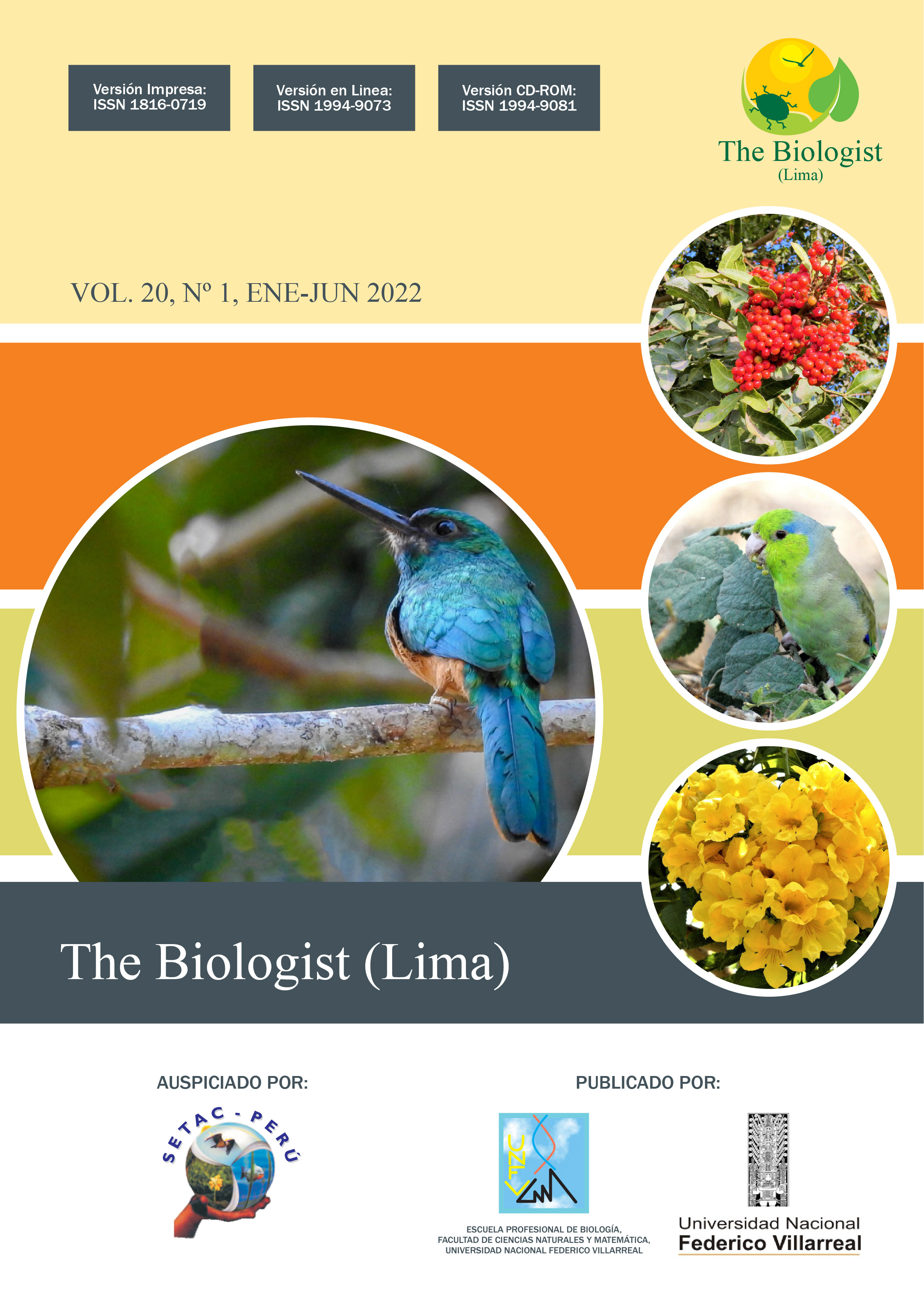ECOTOXICOLOGICAL RISK POTENTIAL DUE TO HYDROCARBONS IN THE COASTALMARINE ECOSYSTEM OF VENTANILLA, CALLAO-PERU: PART - I
DOI:
https://doi.org/10.24039/rtb20222011321Keywords:
aquatic fauna, ecotoxicological risk, coastal-marine ecosystem, ecological disaster, oilAbstract
The purpose of the study was to describe the ecotoxicological potential for hydrocarbons in the coastalmarine ecosystem of Ventanilla, Callao-Peru. It is mentioned that petroleum hydrocarbons, when adsorbed on particulate materials, sediments, and the tissues of aquatic fauna, cause an ecological imbalance. Likewise, liver damage and gills of fish are produced, affecting growth and productivity in biomass. The effects can be acute (eg mortality, necrosis, mutagenicity, suffocation) and chronic (eg
biomagnification processes and loss of biodiversity). A conservative type ecotoxicological risk prediction
was made using the Gecotoxic® computer program where the environmental analysis descriptor
indicated a high type rating (81%), while the environmental effect descriptor was also high prediction, but at 100%. It is concluded that various parameters must be evaluated to consider the risks to human health,such as equivalent potency concentration, matrix sweep value, lifetime carcinogenic risk model, maximum daily consumption, and toxic equivalency factors. In the same way, it must understand several questions in the dynamics of reversibility for the affected areas and among which are mentioned: 1st) what invertebrate organisms can be considered as future indicators of coastal-marine environmental quality, 2nd) how will the fauna evolve? macrobenthic? 3rd) in what time will the trophic interaction be restored? 4th) which threatened or endangered species were affected? and 5th) how much is the economic impact on traditional fishing communities?
Downloads
Published
How to Cite
Issue
Section
License

This work is licensed under a Creative Commons Attribution-NonCommercial-NoDerivatives 4.0 International License.
Objeto: El AUTOR-CEDENTE transfiere de manera TOTAL Y SIN LIMITACIÓN alguna al CESIONARIO (Revista The Biologist (Lima)) los derechos patrimoniales que le corresponden sobre sus obras por el tiempo que establezca la ley internacional. En virtud de lo anterior, se entiende que el CESIONARIO adquiere el derecho de reproducción en todas sus modalidades, incluso para inclusión audiovisual; el derecho de transformación o adaptación, comunicación pública, traducción, distribución y, en general, cualquier tipo de explotación que de las obras se pueda realizar por cualquier medio conocido o por conocer en el territorio nacional o internacional.
Remuneración: La cesión de los derechos patrimoniales de autor que mediante este contrato se hace será a título gratuito.
Condiciones y legitimidad de los derechos: El AUTOR-CEDENTE garantiza que es propietario integral de los derechos de explotación de la(s) obra(s) y en consecuencia garantiza que puede contratar y transferir los derechos aquí cedidos sin ningún tipo de limitación por no tener ningún tipo de gravamen, limitación o disposición. En todo caso, responderá por cualquier reclamo que en materia de derecho de autor se pueda presentar, exonerando de cualquier responsabilidad al CESIONARIO.
Licencia de acceso abierto: El AUTOR-CEDENTE autoriza que manuscrito publicado en la Revista Científica The Biologist (Lima) (versión Impresa ISSN 1816-0719, versión en línea ISSN 1994-9073) permanece disponible para su consulta pública en el sitio web http://revistas.unfv.edu.pe/index.php/rtb/index y en los diferentes sistemas de indexación y bases de datos en las que la revista tiene visibilidad, bajo la licencia Creative Commons, en la modalidad Reconocimiento-No comercial- Sin Trabajos derivados –aprobada en Perú, y por lo tanto son de acceso abierto. De ahí que los autores dan, sin derecho a retribución económica, a la Escuela Profesional de Biología, Facultad de Ciencias Naturales y Matemática de la Universidad Nacional Federico Villarreal (EPB - FCCNM - UNFV), los derechos de autor para la edición y reproducción a través de diferentes medios de difusión.









































